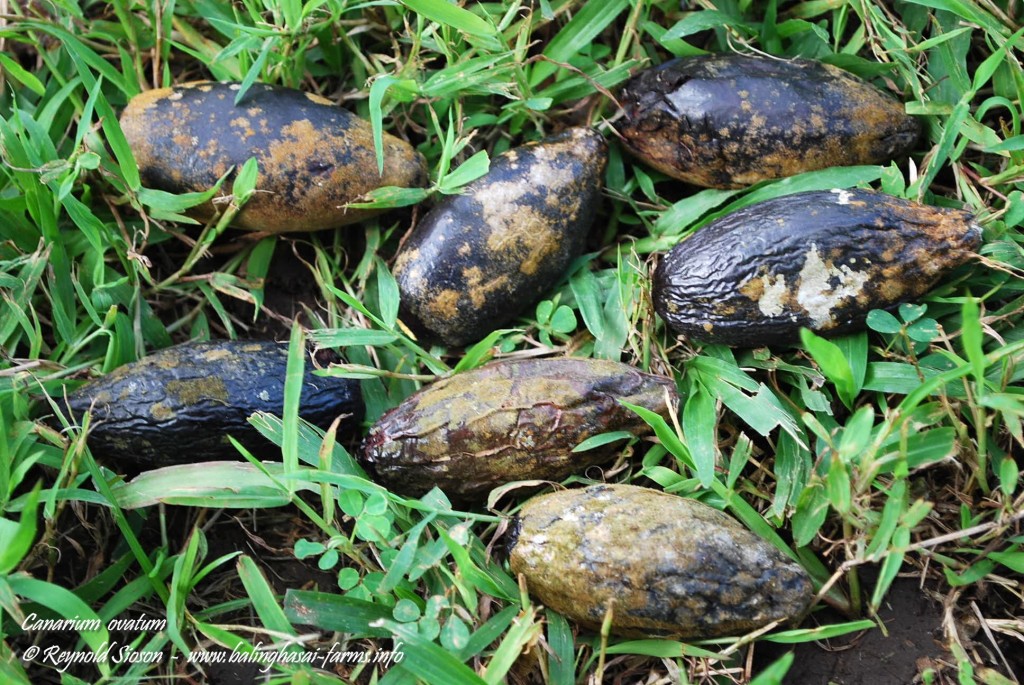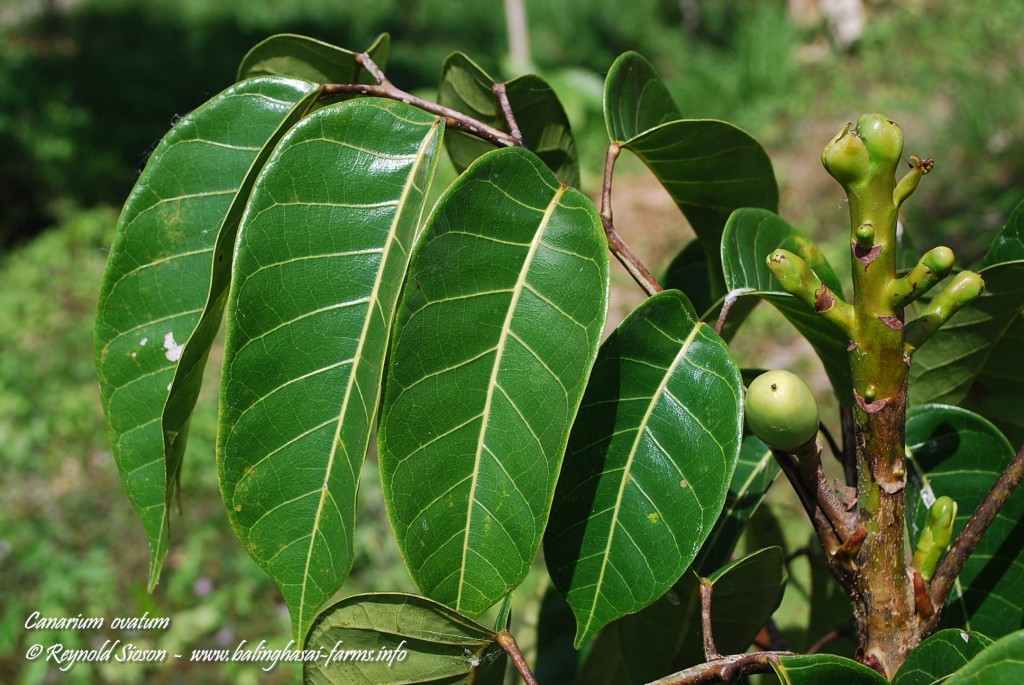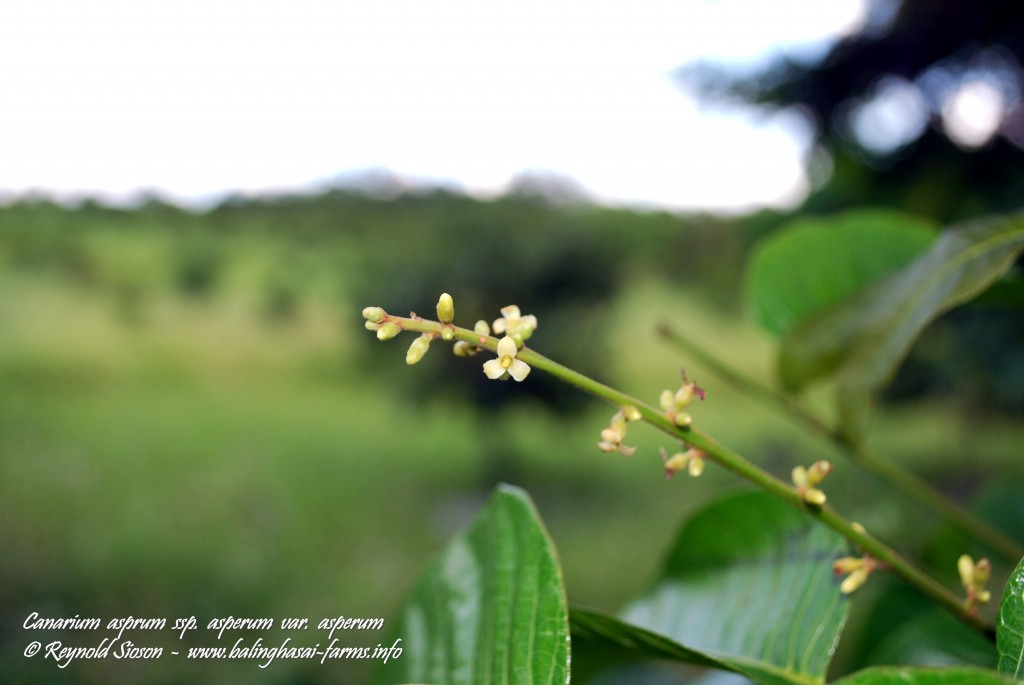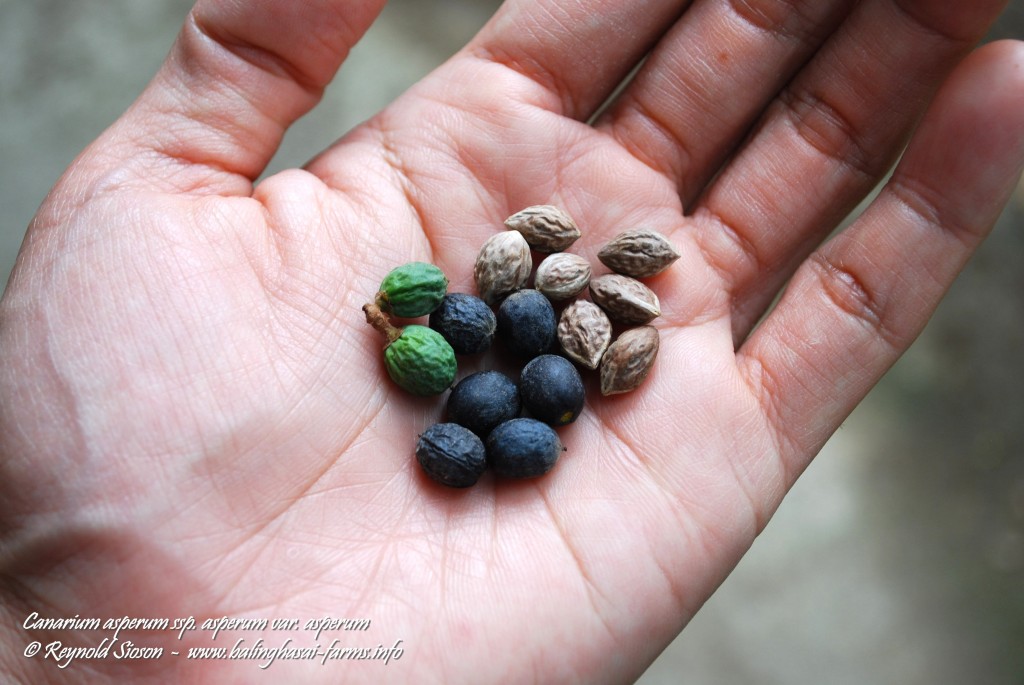 Photo specimen : Domesticated trees
Photo specimen : Domesticated trees
Specimen height : 14-18 meters
Local name : Pili
Trade name : Pili Nut
Botanical name : Canarium ovatum
Family : Burseraceae
Fruiting season : Fallen fruits seen on December
Traits : Buttressed; Dioecious; Drought tolerant; Evergreen; Full sun; Long-lived species; Low to medium altitude tree; Medium-sized to large tree; Spreading crown; Wind hardy; With extensive root system
 Recommendations: Agroforestry; Backyards; Boundary marker; Edible gardening; Farms; Fruit collector’s; Large avenues; Large gardens; Living fence; Plantations; Public spaces; Roadside tree; Shade tree; Specimen tree; Urban greening; Wildcrafting; Windbreak
Recommendations: Agroforestry; Backyards; Boundary marker; Edible gardening; Farms; Fruit collector’s; Large avenues; Large gardens; Living fence; Plantations; Public spaces; Roadside tree; Shade tree; Specimen tree; Urban greening; Wildcrafting; Windbreak
Used for : Nutritious and oily kernels are used in making pastries and confections and made into preserves but they are also good eaten raw; An oil suitable for culinary use, as raw material for soap making and as illuminant can be extracted from the pulp and the kernel; Young shoots are cooked as vegetables or used in green salads; Green pulp pickled; Ripe pulp boiled, seasoned and eaten as a delicacy; Wood and seed shells are used as fuel; Seed shells are processed and sold as small souvenirs and ornaments; Light construction wood used under cover; Wood for furnitures, handicrafts, musical instruments and novelties; Pulpwood
Native range : The Philippines
National conservation status : Other Threatened Species (DENR AO 2007-
Further reading :
Philippine Woods : Principal Uses, Distribution & Equivalent Woods in Asia Pacific (A. Ella, A. Tongacan, R. Escobin & F. Pitargue)
Promoting the conservation and use of underutilized and neglected crops 6 Pili NutCanarium ovatum Engl. (R.E. Coronel)
DENR Administrative Order 2007-1 (Establishing the National List of Threatened Philippine Plants and their Categories, and the List of Other Wildlife Species) (221)






